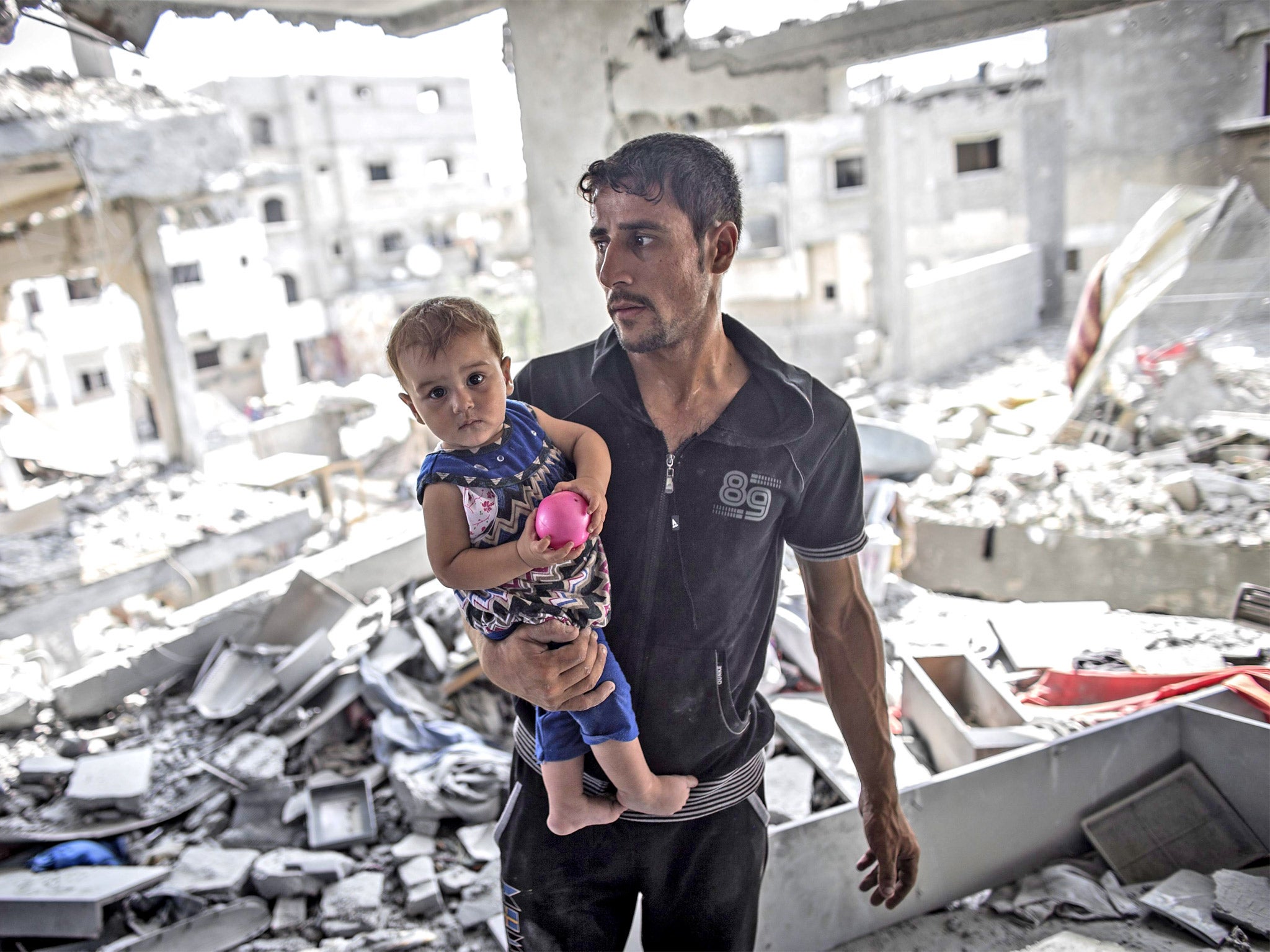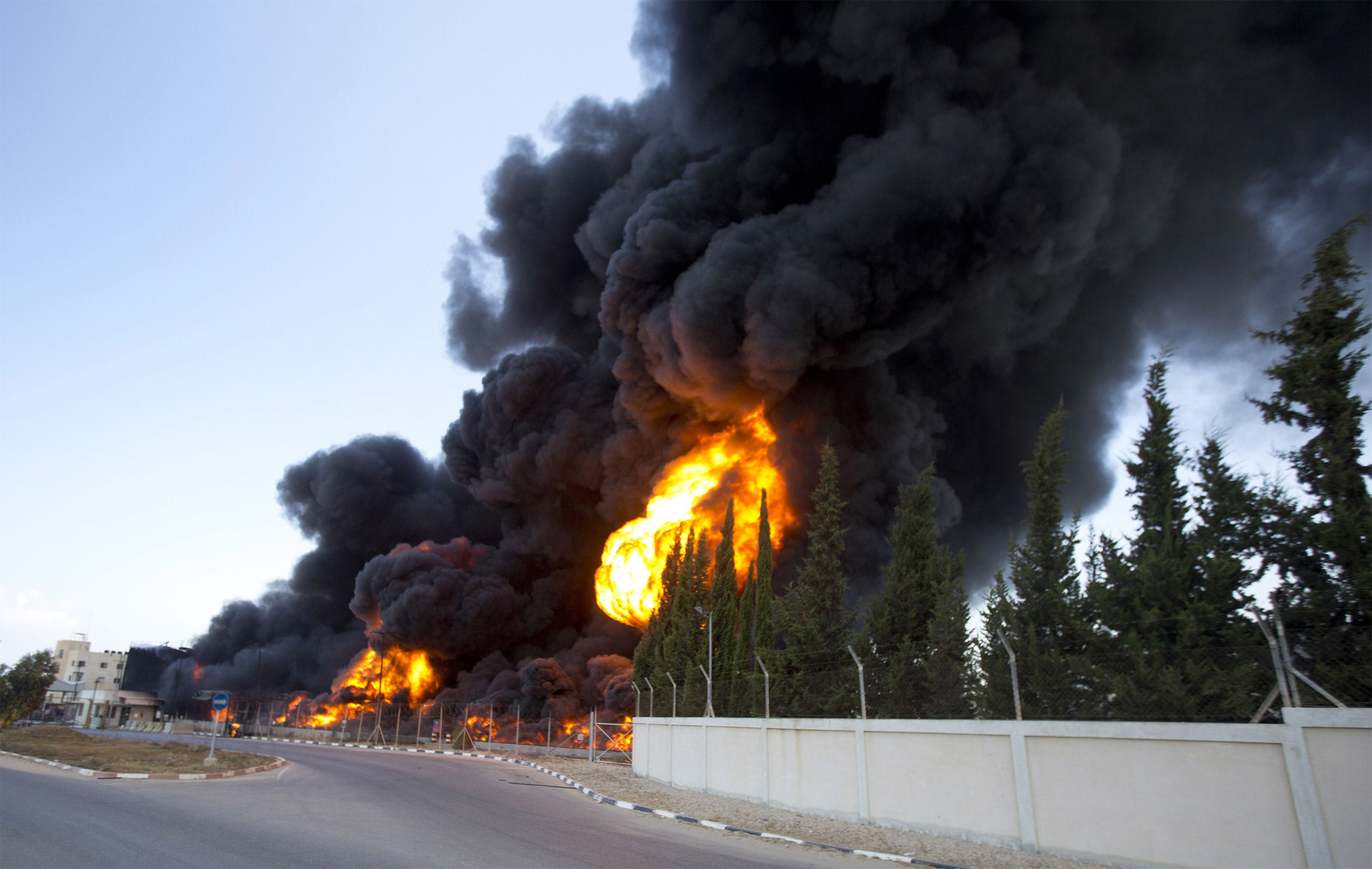Israel-Gaza conflict: Gaza’s survivors now face a battle for water, shelter and power
The first full day of peace reveals the massive reconstruction task ahead

Your support helps us to tell the story
From reproductive rights to climate change to Big Tech, The Independent is on the ground when the story is developing. Whether it's investigating the financials of Elon Musk's pro-Trump PAC or producing our latest documentary, 'The A Word', which shines a light on the American women fighting for reproductive rights, we know how important it is to parse out the facts from the messaging.
At such a critical moment in US history, we need reporters on the ground. Your donation allows us to keep sending journalists to speak to both sides of the story.
The Independent is trusted by Americans across the entire political spectrum. And unlike many other quality news outlets, we choose not to lock Americans out of our reporting and analysis with paywalls. We believe quality journalism should be available to everyone, paid for by those who can afford it.
Your support makes all the difference.The biggest waste-water treatment plant in Gaza City isn’t the sweetest smelling place at the best of times. But today the abnormally acrid stench and large swarms of flies testified to the sewage stagnating in its lagoons. War has stopped the plant doing the job it was built for: limiting the pollution of the Mediterranean by semi-treating the 40 million litres a day it pumps into the sea.
Gaza, which enjoyed its first full day of peace yesterday, has lost 1,814 people, the vast majority civilians killed as they hid from Israeli bombardments. Its ill-equipped hospitals hold thousands of patients, many suffering from horrific injuries.
But Israel’s destruction of homes and infrastructure will ensure that the possibility of Gaza having a normal existence is a distant prospect.
The sewage plant, built with funding from KFW, the German development agency was put out of action by three tank shells. The result is that raw sewage routed through the plant is now being dumped untreated into the sea.
Munzer Shublak, the director general of the coastal municipalities water utility said yesterday that an earlier strike had hit one of the lagoons, spilling raw sewage over the neighbouring agricultural land. This was repaired but after the second bombardment he decided not to send his technicians out. Four of his team had been killed doing their jobs in Rafah and in central Gaza. “I stopped anything that might be a target for an Israeli attack,” he explained,
The shelling which his team will now assess if the present 72-hour ceasefire holds appears to have been surgically precise. Inflicting the minimum of structural damage one shell hit a big storage vat, blocking a crucial pipeline with wood and rubble, Another took out the main electrical control bay. And another destroyed the air conditioning unit designed to keep the switching mechanisms from overheating.
It’s a paradoxical measure of the humanitarian crisis engulfing Gaza that because severe water shortages have reduced consumption by many residents to well below international emergency standards, Mr Shublak estimates that actual sewage flowing from Sheikh Ejlin will in turn be much less than the normal 40 million litres a day.
For the halt to waste treatment is only part of a much wider water and sewage problem. Oxfam said last night that the destruction by bombing of wells, pipelines, and reservoirs, caused contamination of scarce fresh water with sewage and that 15,000 tons of solid waste had seeped into Gaza streets. “We’re working in an environment with a completely destroyed water infrastructure that prevents people in Gaza from cooking, flushing toilets or washing [their] hands,” the agency said,
And that in turn is only one element of the infrastructural damage inflicted on Gaza by four weeks of war, much of which UN, aid agencies and local utilities had their first real chance to assess yesterday, the quietest since Israel’s Operation Protective Edge began on July 8. Frode Mauring, the UN Development Programme’s special representative said that with 16-18,000 homes totally destroyed and another 30,000 partially damaged, and 400,000 internally displaced people “the current situation for Gaza is devastating”.
As the agency began its assessment of the massive reconstruction needed in Gaza, Mr Mauring added that since Spring 2013 no new UNDP project in Gaza had been approved by Israel, which banned the importation of construction materials after the discovery of a tunnel under the border.
“We cannot have a situation in which it takes 20 months to get approvals from COGAT [the Israeli military's civil affairs wing] to do construction,” he said. “The status quo is not a viable option.”
Mr Mauring said that the bombing of Gaza’s only power station and the collapse at least six of the 10 power lines from Israel, had “huge development and humanitarian consequences”. Majdi Yaghi, head of distribution for the Palestinian electric company said that the power station could take six months to a year to repair but this depended on Israel allowing the importation of construction materials.

Electricity officials complain that their maintenance engineers have been shot at when they seek to repair lines, even after co-ordination with the Israeli military.
Trond Munby, of the UNDP’s Gaza office, said in his experience of war zones this was the worst for attacks on public servants doing their job. There are also worries among some aid agencies about the willingness of donors to fund rebuilding of installations which may be attacked again by Israel in future.
Mr Mauring acknowledged that a bridge at Wadi Gaza in the central Strip, destroyed during Israel’s 2008-09 Operation Cast Lead, had still not been rebuilt.
But he was forthright in also calling for Israel to lift its bans on the exports on which Gaza’s economy depended, pointing out that jobs and economic security reduced extremism. “You don’t have to be an economist to realise that people are going to be reluctant to invest in a place which cannot trade,” he said.
UN officials strongly reject Israeli suggestions that cement imported for international construction projects was used by Hamas for military tunnel building, pointing out that while such imports were exhaustively monitored, cement and other materials were freely available through the smuggling tunnels from Egypt.
Join our commenting forum
Join thought-provoking conversations, follow other Independent readers and see their replies
Comments